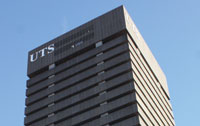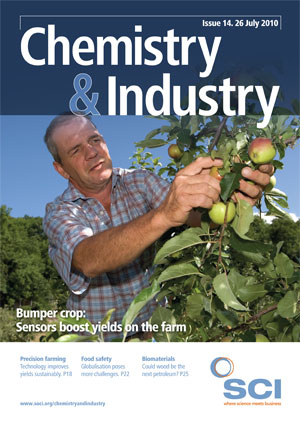City eyesores could be turned into low carbon icons by wrapping them in advanced textiles. But questions remain over the suitability of these solutions. Patrick Walter investigates
Architectural travesties that offend the senses with their façades of bleak concrete and dulled glass could be banished from cities by furnishing them with a new skin. In the future, eyesores could be cocooned in hi-tech materials that not only improve the cityscape’s aesthetics, but also cut the building’s water use, energy footprint and carbon emissions. And all this can be accomplished at a fraction of the cost of constructing a new, energy efficient building.
The ugliest building in Sydney
The designer behind this idea to breathe new life into 1960s monstrosities is the Laboratory for Visionary Architecture (LAVA), which won the 2010 ZEROprize award in the Future of Re-skinning category for its bold reimagining of downtown Sydney in Australia. Its design would cover up the University of Technology, Sydney (UTS) Tower, hiding a building once voted ‘the ugliest building in Sydney’ by the readers of the Sydney Morning Herald. Chris Bosse, director of LAVA and one of the designers behind the UTS Tower re-skin design, explains that their reasons for tackling this Australian eyesore are, in part, personal. ‘We’re based in Sydney and we look at the UTS Tower pretty much all day and night. It’s not that we hate the building it’s just a very obvious building to choose as a prototype, but there are a lot of other buildings that are in similar need and everyone knows one in their city.’
The brutalist legacy of 1960s and 1970s architecture has left a scar on the face of many towns and cities around the world. LAVA is hoping to heal these with a cosmetic facelift of polymer membranes that can not only hide the worst buildings, but do it with existing, albeit cutting edge, technologies and fabrics. ‘It’s probably fair to say that the project is visionary,’ Bosse says. ‘It is not necessarily something that is applicable right now, but it is close enough for an immediate [technological] breakthrough.’
The ZEROprize is offered to design teams who can take old, concrete high-rise structures and give them a facelift and, at the same time, reduce their carbon, water and energy footprint to practically nothing. The skin for the Sydney Tower has not been built yet, but Daniel Cook from MakMax, the Australian structural fabrics company that worked with LAVA on its design, is confident that if it got the go ahead it could be completed in as little as nine months. MakMax, a subsidiary of Taiyo Kogyo, the biggest tensile membrane manufacturer in the world, has worked on other, smaller designs with LAVA, such as its Green Void art installation in Customs House in Sydney, the Moët & Chandon tent at the Melbourne Cup in 2007 and a Stadia China installation, so Cook says that it was a natural partner for its latest foray into membranebased architecture.
The design calls for the membrane to be attached to steel supports that are fixed to a frame that surrounds the building. This means that the building is completely enclosed by the skin, but there is still enough space between the building and the membrane to create a microclimate. ‘The entire building relies on air conditioning and artificial lighting, a concept from the 1960s, which was a time when energy was not an issue,’ Bosse explains. ‘By adding this additional layer you naturally shade the building and you can then afford to remove the tinting from the glass, letting more light into the building.’ The skin can also be used to collect rain, an important issue in Sydney where 90% of rainwater is lost as runoff, Bosse says.
However, the design has not convinced everyone. Philip Drew, author of New tent architecture, says: ‘Bosse’s wrapped tower will undoubtedly mark the site in a quite sensational, if bizarre, way but it totally ignores the streetscape and the context again by masking the tower completely. In short it is bad civic design.’ Wrapping buildings is not a new idea. The artist Christo began wrapping objects in plastics in 1958, eventually progressing to buildings. Drew says that what made Christo’s work special is that it offered a tantalising hint of what lay beneath the wrapping – like a robe draped over the human form. Where LAVA’s project falls down, he says, is that there is no indication of what lies beneath – it is an ‘opaque package’.
Thiemo Ebbert, a façade consultant for Imagine Envelope and one of the winners of the Large Commercial ZEROprize, says that retrofitting is the future. ‘In Germany two-thirds of the money now spent in construction is used in retrofitting,’ he notes. Ebbert points out that cutting energy use for environmental and economic reasons has become a very important environmental and economic argument, and re-skinning is the cheapest way to get buildings up to spec. Added to this is the fact that the prime spots in towns and cities are already taken – often by 1960s buildings – and reskinning becomes the obvious choice as demolition is expensive and uneconomical by comparison. Buildings also now have energy ‘passports’ that tell the buyer how efficient they are and he thinks that better energy figures could be used as a marketing tool to sell office space.
A number of transparent materials have been proposed for the skin for the UTS Tower by the design team. One of the best known is the lightweight, yet strong, plastic ethylene tetrafluoroethylene (ETFE). ETFE skins already have a good track record in buildings and were used to construct the striking, multicoloured Water Cube at the 2008 Beijing Olympics and the futuristic biomes of the Eden Project in Cornwall. Bosse already has experience using ETFE as, while at architect PTW, he was one of the designers behind the soap bubble-inspired Water Cube. ETFE has several properties that would make it an excellent skin, including better insulation than glass, low weight and resistance to dirt and grim, due to its similarities to Teflon.
Stamisol FT381

LAVA’s design for the UTS Tower will not only be energy efficient, it should also be cheaper than other alternatives, such as a complete refit. In its entry to the ZEROprize, LAVA estimates that a complete redesign of the Tower could cost as much as $175m (€124m) and would involve a long, disruptive construction phase. Other proposed solutions include a complete refurbishment of the building, but this would not solve the original problem of the blot on Sydney’s skyscape. The skin, by contrast, would cost as little as A$25m (€17.7m) to produce an iconic new landmark that would also cut the building’s carbon footprint.
The polymer sheath has other advantages. Cook says that the fabric could contain flexible solar panels woven into the material to enable it to generate its own power. Commercial flexible solar panels that can be woven into a textile are not available yet, but flexible electronics are developing rapidly and this could be a real possibility in the coming years (C&I 2009, 21, 18; C&I 2010, 5, 6). In the same vein, LAVA has said that the plastic cocoon could be lit up with an array of LEDs and active media surfaces woven into the fabric and flexible LEDs are already commercially available, although flexible TV screens are not here yet (C&I 2007, 6, 21). At the moment, conventional backlighting and projection could be used to produce moving images and light up the building.
‘I appreciate the motives behind the proposal in terms of energy and convection and am very positive about using textile and film materials where appropriate and intelligently applied,’ Drew says. Nevertheless, he says that the design lacks maturity. The narrow horizontal windows in the Tower restrict vision and Drew points out that dropping a veil over the tower will intensify the feelings of claustrophobia. ‘UTS at the present time is desperate to make some sort of architectural statement and has hired Frank Gehry to do one of his highly clichéd Guggenheim Bilbao shapes as the new Business School. I see the wrapped tower in a similar vein as sensationalist, but in this instance, at least having some sustainability and functional arguments in its favour.’
Ebbert notes that the innovations will keep coming with a smarter application of existing technologies, a greater emphasis on cradle-tocradle material use, and new developments such as facades that grow algae for biofuels. ‘There’s a huge market for the next 20-30 years.’
Despite the science fiction-esque appearance of LAVA’s design, UTS is taking it seriously. The president of UTS has visited LAVA and asked for more information on implementing it, as well as a breakdown of costs, Bosse says. ‘If the UTS tower design got off the ground I think you’d see a great amount of interest from the public architecturally and adoption throughout Australia – it really would be a landmark project,’ Cook notes.
But Drew says that the rush towards an eye-opening structure is damaging to textile architecture. ‘What I find objectionable is the exploitation of textile and tensile membranes simply to achieve sensational shapes… there must first of all be an intelligent understanding and analysis of the situation.’ He points out that the key reason to use textiles in buildings is because they are resource efficient, requiring far less energy to manufacture and can be re-deployed as necessary. Textiles should be central to building workplaces and homes that are more sustainable, he says, not used to hide old mistakes.
Bosse says that, ultimately, what he would love to have is a reactive skin that can change to suit the conditions by changing its density, porosity and light transmission. For now, he is content to push ahead with conventional materials. ‘Where there is a real need there will be, sooner or later, real demand and a real solution – and it’s not only this building, there’s thousands of buildings in the world that have outlived their use by date and we’re struggling to know what to do with them,’ he says.





